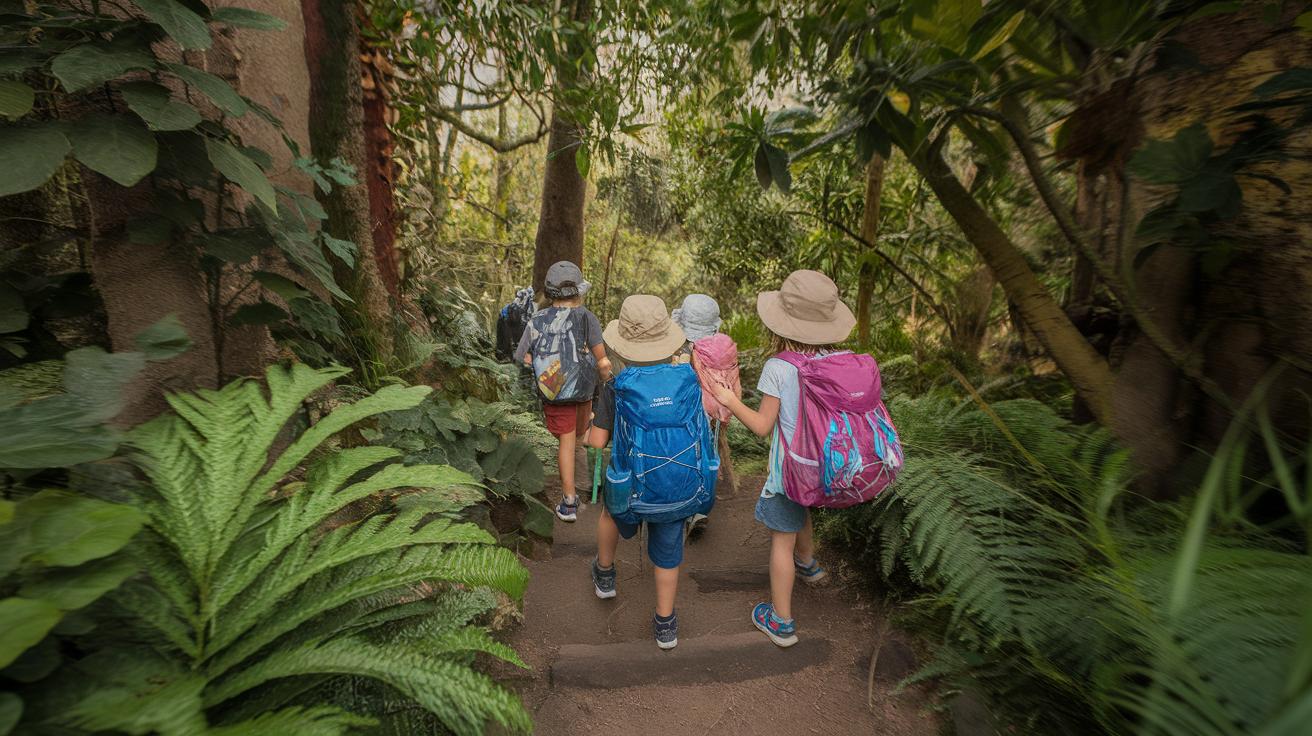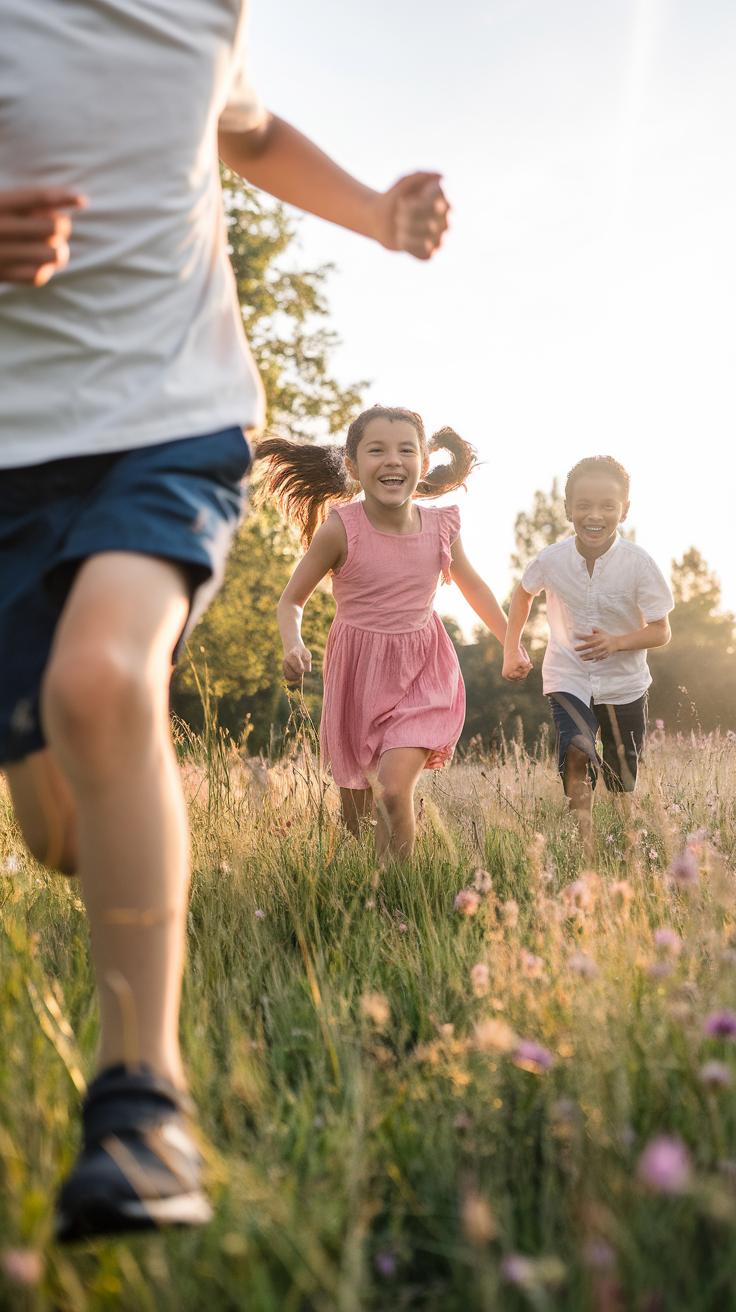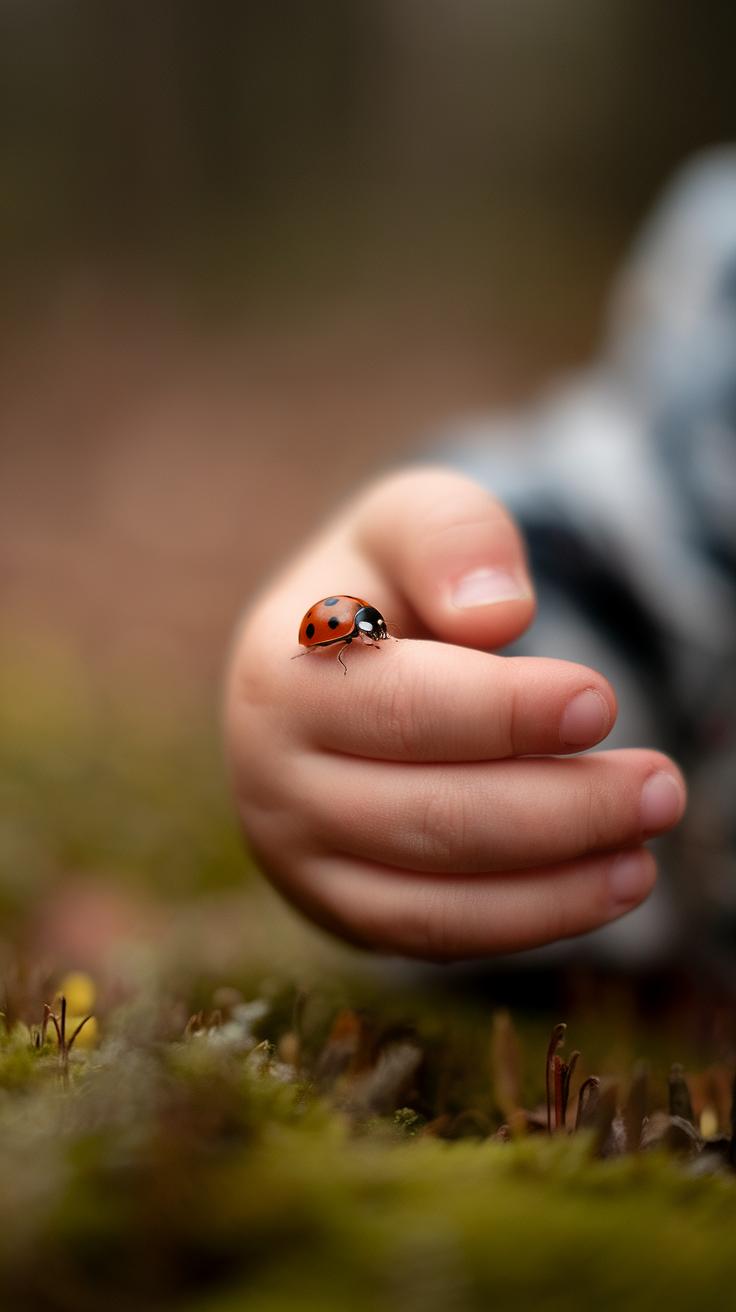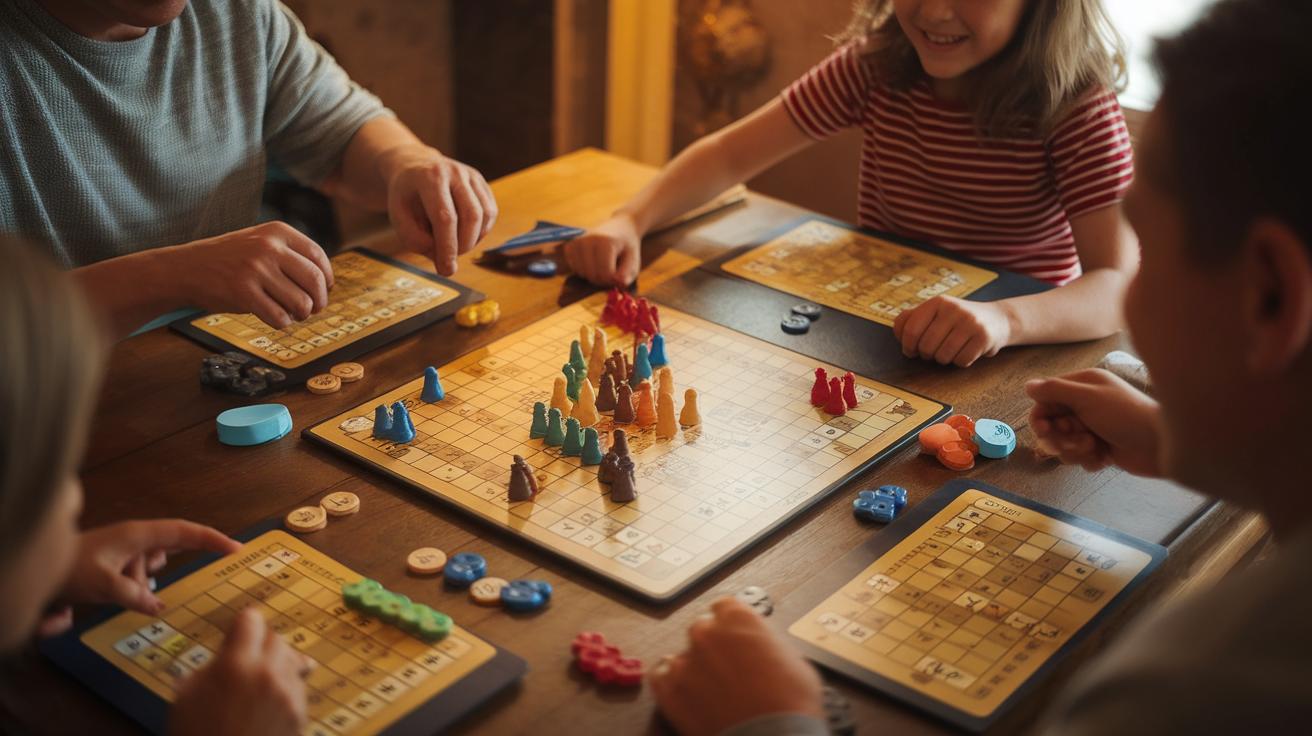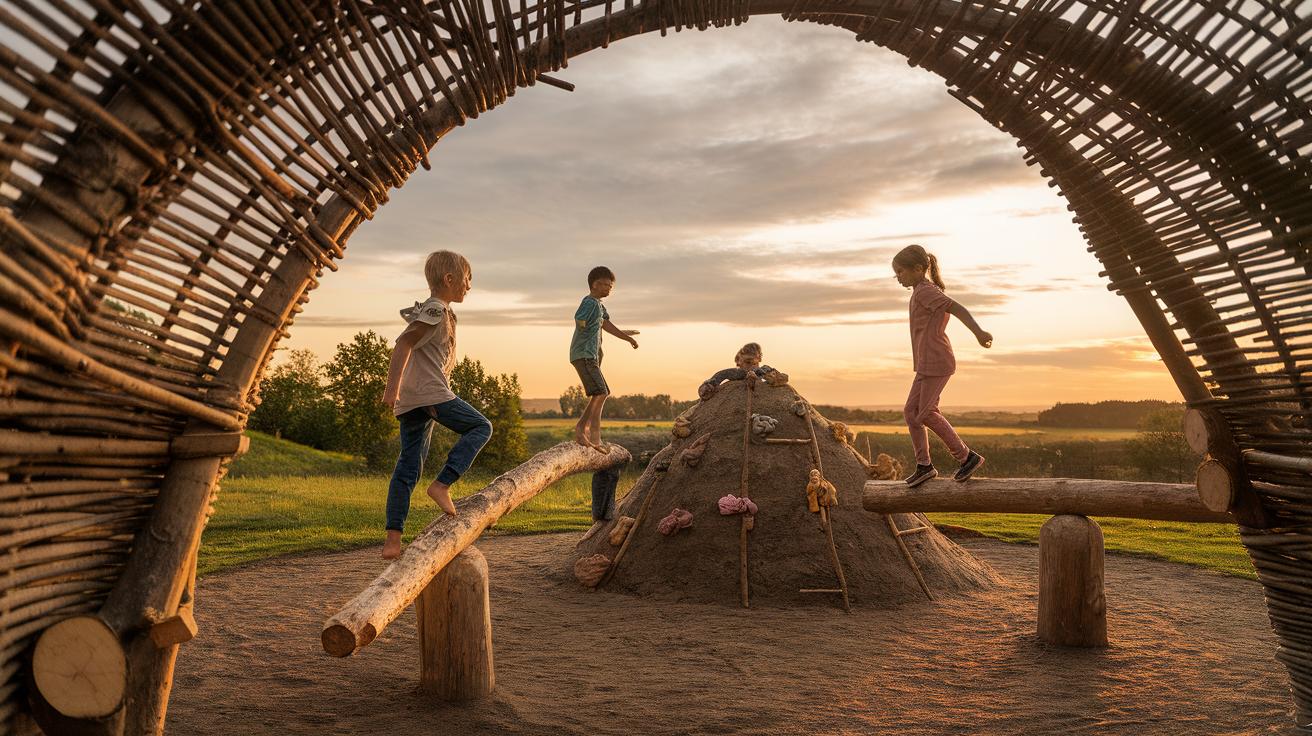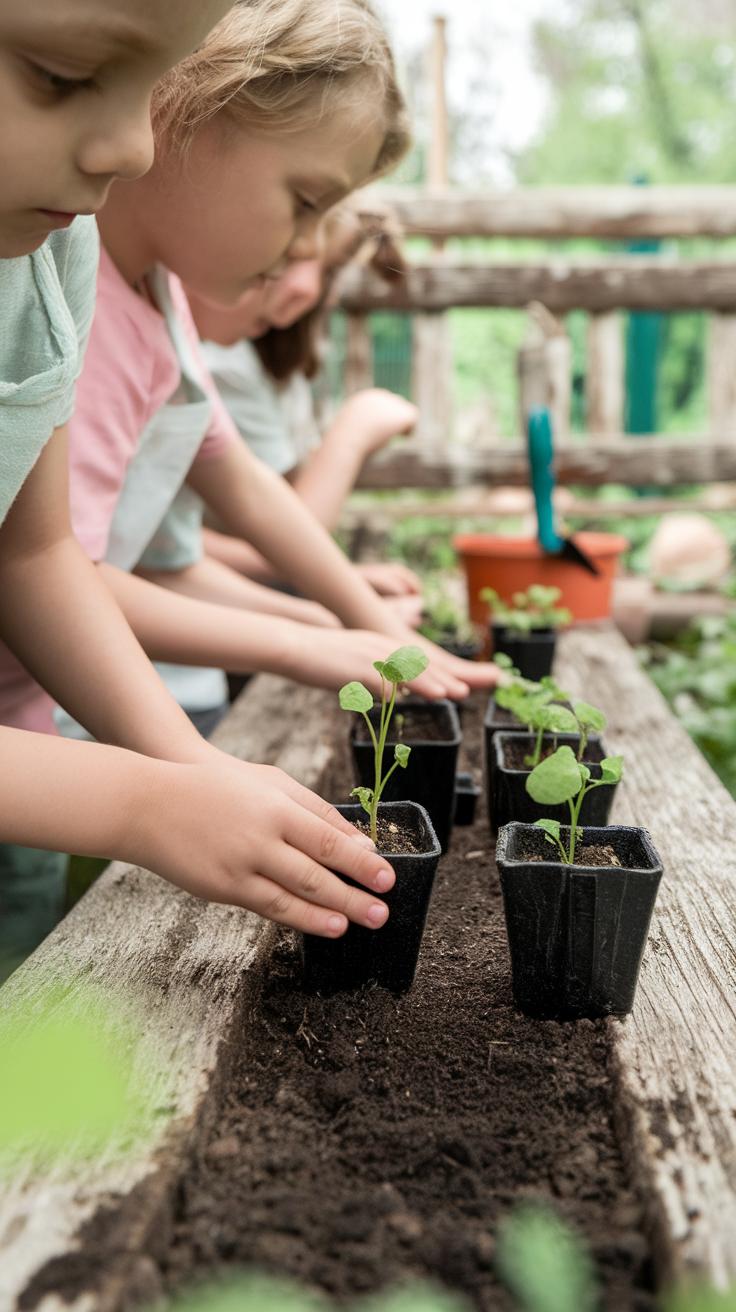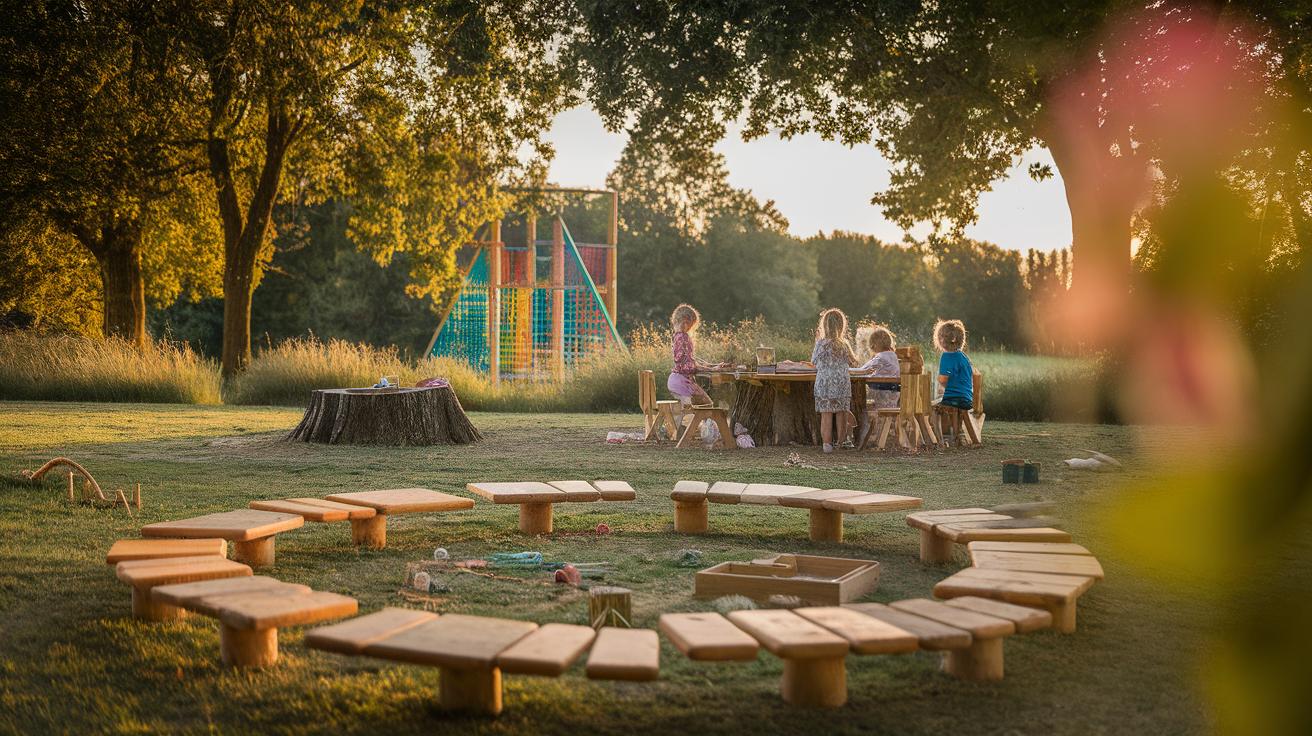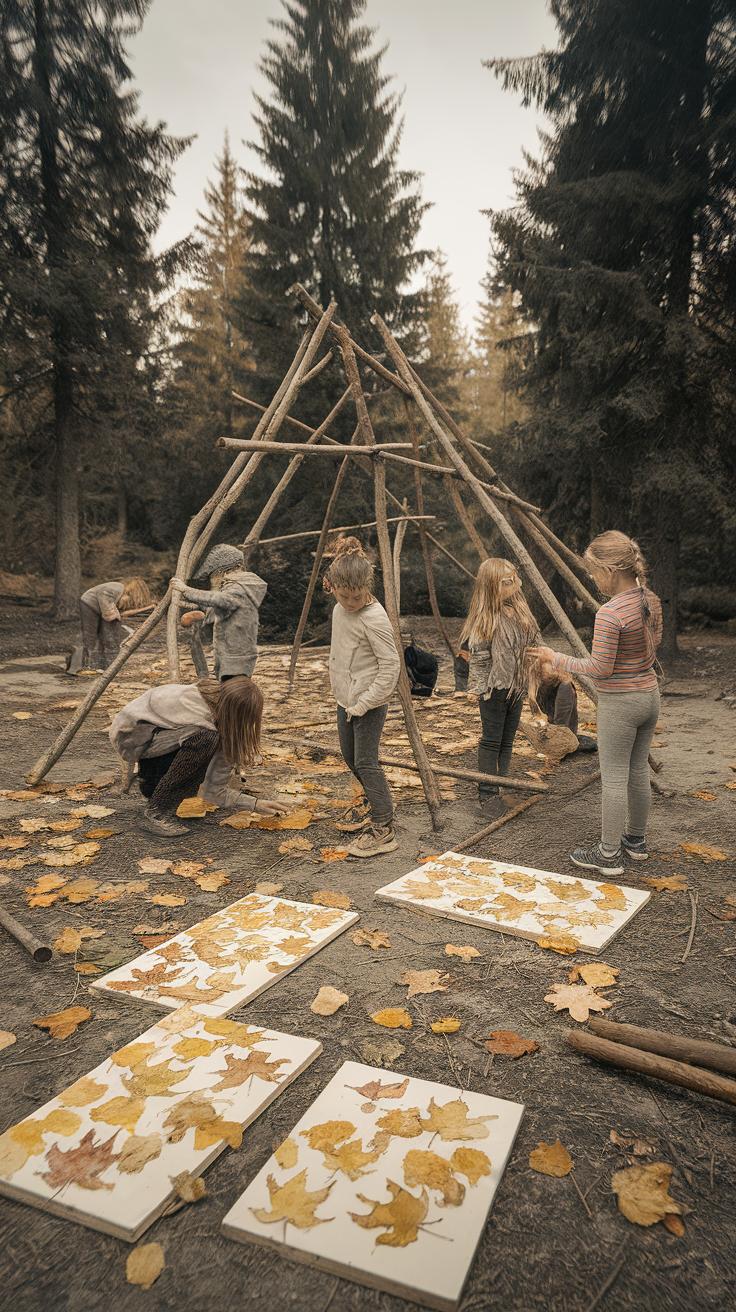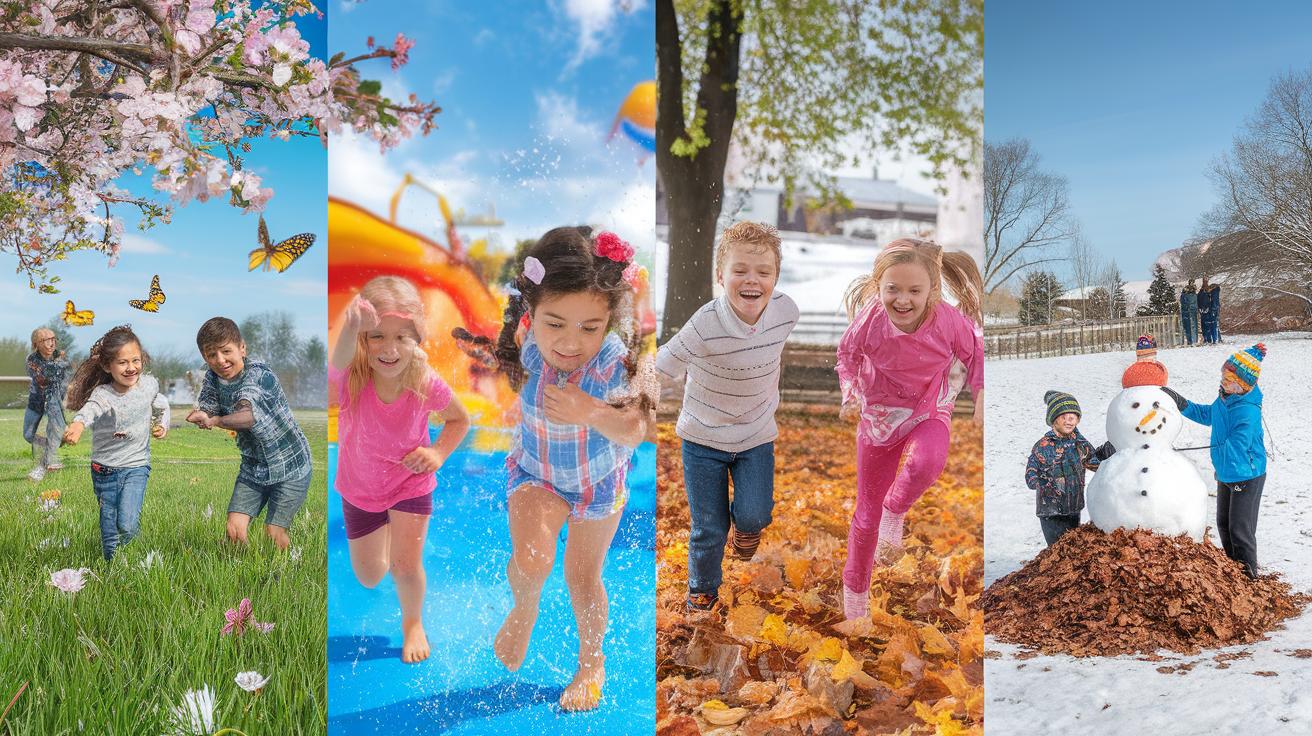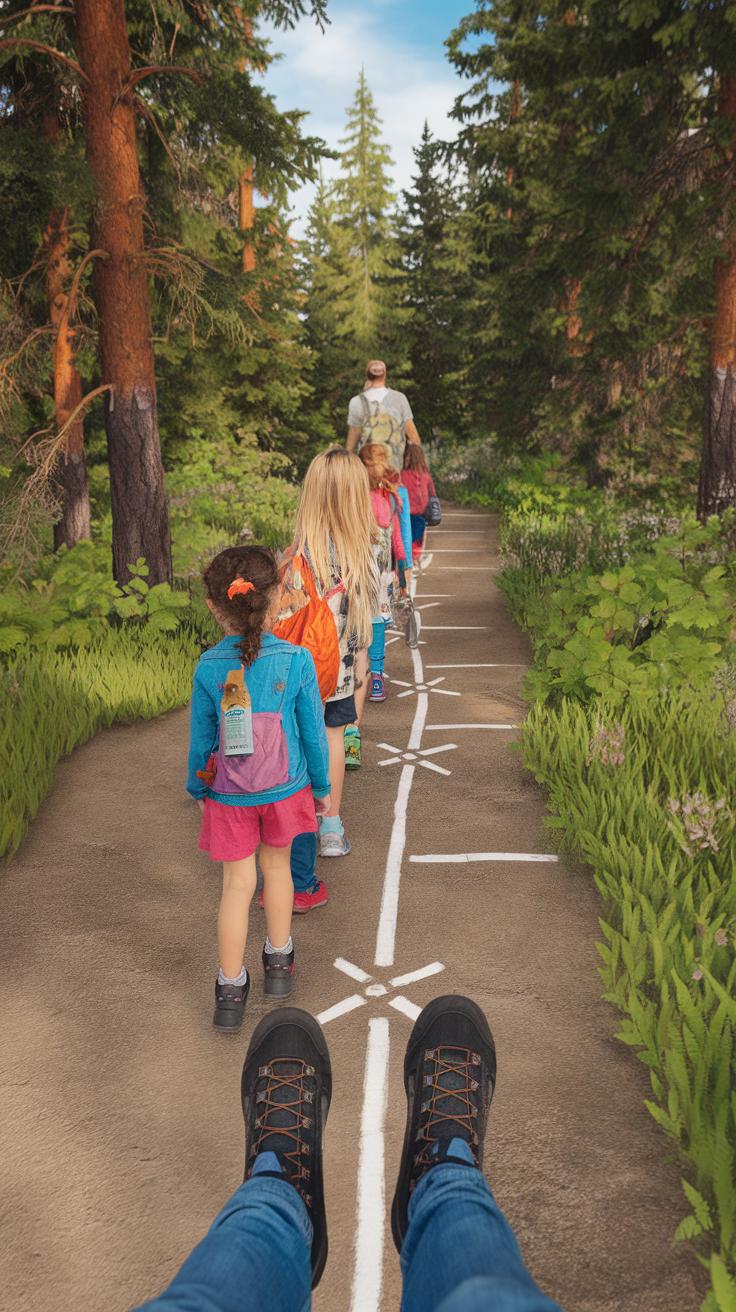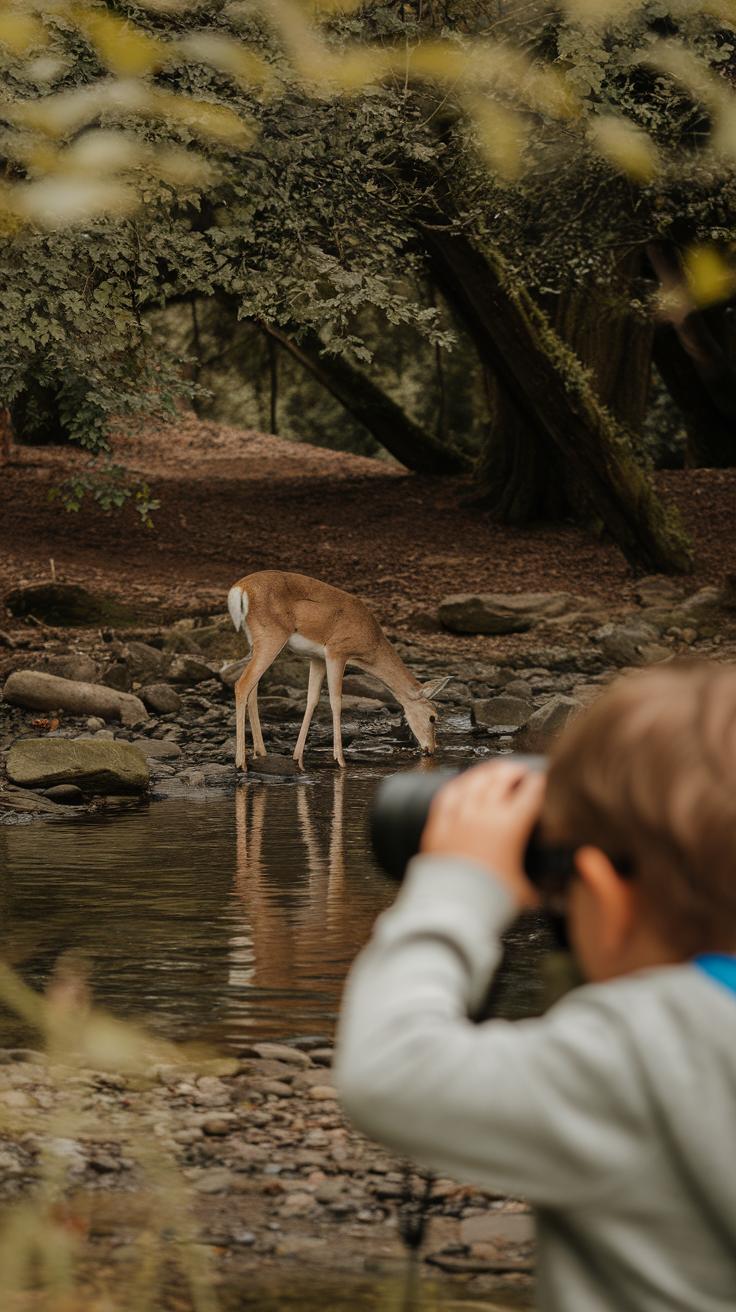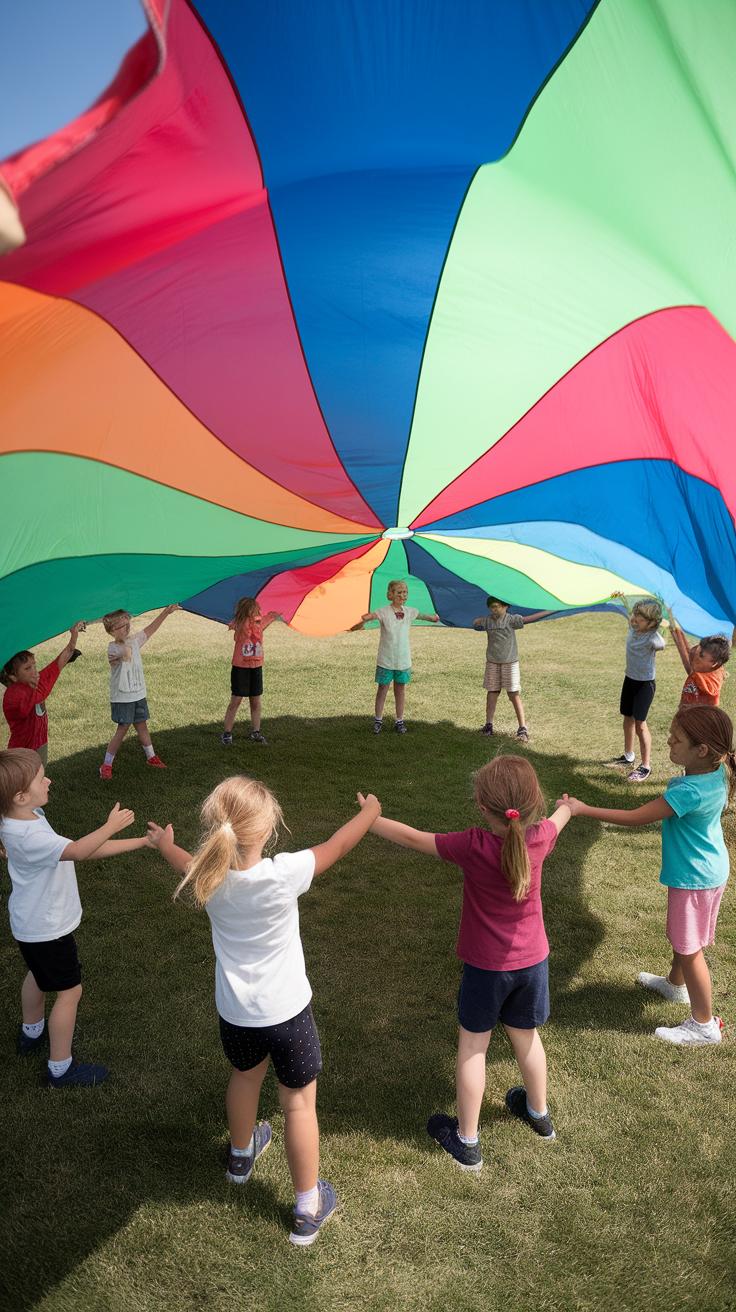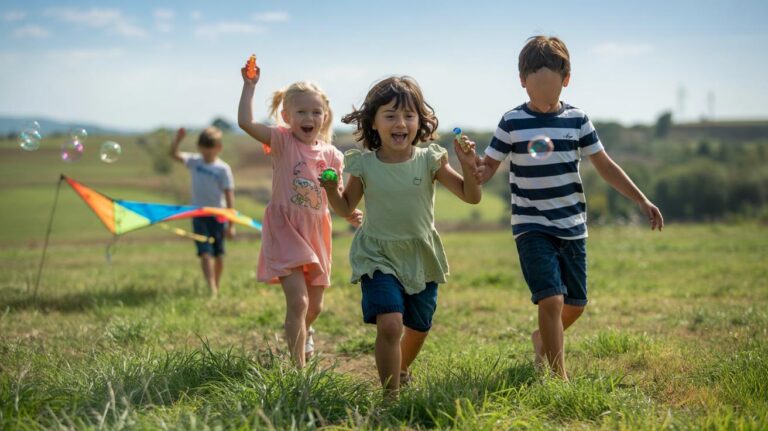Introduction
Encouraging children to spend time outdoors offers many benefits, from physical exercise to learning about the natural world. Nature provides a perfect playground for kids to develop their curiosity, skills, and connection with the environment. Outdoor activities help them stay active and can improve mental wellbeing. When kids engage with nature, they gain valuable experiences that foster creativity and problem-solving.
Choosing activities that are both fun and educational can inspire children to learn while they play. You can find simple ways to introduce nature exploration at home or during family outings. Activities like hiking, bird watching, gardening, or nature scavenger hunts promote awareness and appreciation of the environment. How can you motivate your kids to enjoy these outside activities? What experiences will help them form lasting memories and positive habits toward nature?
Benefits of Outdoor Activities for Children
Outdoor activities have a strong role in helping children grow. Physical movement outside improves their fitness, coordination, and stamina. At the same time, being in natural surroundings supports mental calmness and focus. When kids play outside, they connect with others and build social skills like teamwork and communication. Nature offers endless chances to ask questions and try new things. This hands-on learning encourages creativity and problem-solving. Have you noticed how a simple walk in the woods can spark your child’s curiosity or inspire their imagination? Outdoor experiences provide real-world lessons that go beyond textbooks. In this way, time spent outside strengthens the body, sharpens the mind, and nurtures relationships.
Physical Health Advantages
Physical health improves sharply when kids spend time outdoors. Running, climbing trees, and playing tag or hide-and-seek all encourage movement. These activities help develop muscles, balance, and coordination. When children explore trails or jump over rocks, they exercise without even realizing it. Long periods of sitting indoors get replaced by active play that makes their heart stronger. Are you finding ways to include physical challenges like obstacle courses or nature hikes? These not only boost fitness but also create lasting habits that keep children healthier as they grow.
Boosting Mental Wellbeing
Fresh air and natural light have a positive effect on children’s moods and ability to concentrate. Outdoor time can lower stress levels and reduce feelings of anxiety. Natural surroundings promote a sense of calm that technology often fails to provide. When kids explore a park or garden, their brains get a break from screens and noise. How often do you see children returning from outside feeling happier and more ready to learn? Exposure to green spaces encourages mindfulness and mental refreshment, supporting better emotional balance and focus during daily tasks.
Simple Nature Exploration Ideas
Encouraging kids to spend time outside doesn’t require special equipment or a big trip. Your backyard, a nearby park, or local green space offers many chances for hands-on nature activities. Try giving children a simple checklist of common natural items to find, like different leaves, rocks, or insects. This keeps their attention focused and teaches observation skills.
You can also ask questions such as, “Can you find a leaf with a unique shape?” or “What colors do you see in the flowers around you?” These encourage curiosity. Encourage kids to touch leaves, smell flowers, and listen to sounds around them. These small sensory experiences connect them with their environment. Even a short time in nature helps develop concentration and creativity, making learning outside accessible and enjoyable for every child.
Scavenger Hunts and Nature Walks
Organizing a nature scavenger hunt is a great way to make a walk exciting. Create a list of items to find, such as a pinecone, a feather, or a smooth rock. You can choose themes like bugs, trees, or colors to guide the hunt and increase focus. Let kids work in teams or on their own, depending on what fits your group.
During a nature walk, encourage children to look closely at plants and animals. Ask them to notice patterns on leaves or sounds they hear in the trees. Asking questions like “Why do you think this bird is singing?” helps connect their observations to learning. Keeping the walks short and interactive prevents boredom and builds kids’ confidence in noticing details.
Bird Watching for Beginners
Introducing bird watching starts with showing kids how to watch quietly and patiently. Equip them with simple tools like binoculars or a field guide printed on paper. Start in familiar places, like your backyard or a local park, to spot common birds such as robins, sparrows, or blue jays.
Teach kids to look at bird size, color, beak shape, and behavior to tell birds apart. You might say, “This bird has a red chest and sings a cheerful tune. What could it be?” Using apps or books helps check guesses and learn bird names. Regular short sessions build both patience and observation, turning bird watching into a fun, educational activity that grows with your child’s interest.
Gardening and Growing Plants Educational and Therapeutic Benefits
Gardening offers a hands-on way for kids to learn about nature. Growing plants helps them see the life cycle from seed to flower or fruit, making science real and visible. Taking care of plants teaches responsibility because they need regular watering and attention. Kids also develop patience when they wait for seeds to sprout and grow.
Beyond education, gardening can calm the mind. The act of working with soil and plants gives children a sense of accomplishment and reduces stress. When you watch a plant grow with a child, you invite curiosity and care. This interaction helps build a connection with the natural world.
Have you noticed how kids light up when they pick the vegetables or flowers they planted? This simple experience encourages healthy eating and pride. Gardening becomes more than a chore; it becomes a lesson in life skills and science combined.
Starting a Small Garden
Begin with a small space that your child can easily manage, like a container or a raised bed. Choose plants that grow quickly and don’t need much care, such as radishes, sunflowers, or beans. These give quick rewards and keep children interested.
Let your child help prepare the soil, plant seeds, and water each day. Label the plants with simple markers or drawings to make it fun. Make sure the garden gets enough sunlight and show your child where to find it.
Setting a daily routine around gardening builds good habits. Ask your child questions like, “What do you think this plant needs to grow?” This keeps their mind engaged in the process and makes gardening a shared activity.
Connecting Gardening to Science
Use gardening as a practical way to teach science concepts. When kids watch leaves turn green, it’s a chance to explain photosynthesis — how plants use sunlight to make food. You can show how roots absorb water and nutrients from the soil.
Gardening also introduces ecosystems. Bugs, worms, and birds all play roles in a garden’s health. Encourage children to observe these creatures, asking what purpose they might serve. This brings ecosystems into their daily experience.
Track plant growth over time to discuss variables like sunlight, water, and soil quality. Encourage your child to keep a plant journal with drawings and notes. How does changing one factor affect the plant? These questions promote scientific thinking and curiosity.
Outdoor Creative Projects
Creative activities outside invite your child to use imagination in the natural world. Making art and building structures with nature helps kids connect with their surroundings. These projects can challenge their problem-solving skills and encourage teamwork.
Simple craft ideas might include making leaf rubbings or arranging stones to create patterns. Kids often enjoy building small forts or obstacle courses using sticks and branches. These hands-on projects turn the outdoors into a workshop.
When children paint natural scenes, they learn to observe details closely. This fosters patience and focus. You can prompt your child with questions like “What colors do you see in the leaves?” or “How does the light change as the sun moves?” Such questions deepen their engagement and awareness.
Creative outdoor projects make nature a place of discovery. They encourage kids to take their time, experiment, and share ideas while playing and learning outside.
Nature Crafts with Found Materials
You can guide children in gathering natural items like leaves, sticks, and stones to create crafts. One idea is leaf collages, where kids glue leaves onto paper to form animals or shapes. This helps them notice different colors and shapes in nature.
Sticks become natural paintbrushes or frames for pictures when tied with string or yarn. Stones can be painted or stacked into balancing sculptures. These simple crafts encourage fine motor skills and creativity.
Ask your child what stories the materials tell. Do the leaves look like feathers? Could the stones be tiny homes? Craft projects with natural objects spark imagination and show that art can be found everywhere outdoors.
Building Simple Outdoor Structures
Building forts and shelters provides a hands-on way to work with nature’s elements. Help your child find sturdy branches and leaves to create a simple structure. Teach them to stack materials firmly and check for balance to stay safe.
Creating an obstacle course with logs and stones lets kids move actively while planning their route. Encourage teamwork by having them design the course together, discussing how to make it fun and challenging.
Ask questions like “What will make the shelter strong?” or “How can we make sure the course is safe?” These help children think critically and plan ahead. Building with natural materials offers a learning experience about physics, cooperation, and the outdoor environment while having fun.
Hiking and Trail Activities
Teaching children to hike and explore trails starts with safety. Before setting off, explain the importance of staying on the path and watching for trail markers. Carry water, snacks, and a first-aid kit. Choose appropriate clothing and footwear for the weather and terrain.
Keep kids active and involved by letting them help with simple tasks like map reading or spotting trail signs. Ask questions during the walk to keep their minds engaged. Encourage them to observe different plants, insects, or birds along the way. Short breaks allow rest and time to notice details in nature.
Set small goals like reaching a lookout or a pond to keep excitement high. Reward curiosity and effort with praise or a nature-related sticker. By combining safety and participation, your kids will build confidence and a love for hiking that lasts.
Choosing Kid-Friendly Trails
Pick trails that match your child’s age and energy. For younger children, flat, short paths with clear markings work best. Trails under two miles allow kids to build stamina without feeling tired.
Check if the trail is easy to access, with parking close to the start. Avoid rough or steep terrain for beginners. Look for features that capture children’s interest, like a stream, interesting rocks, or flowers. Trails that include safe places to rest or picnic add comfort.
Research online or ask park staff about trails designed for families. Thinking about your child’s preferences can help you choose a route they will enjoy and remember.
Making Hiking Fun and Educational
Use games to bring excitement to the hike. Try a scavenger hunt where kids find leaves, feathers, or animal tracks. Share simple stories about the trees or animals you see to spark imagination and curiosity.
Teach fun facts about the plants and animals along the trail. Ask children to guess what makes a plant special or why some animals live here. Let them sketch what they see or take photos to share later.
Encourage questions and look for answers together. These moments turn a walk into a hands-on learning adventure. How can you make nature more interesting for your kids on your next hike?
Wildlife Observation and Respecting Nature
Watching animals in their natural homes helps your child feel connected to nature. Teach them to stay quiet and still so animals don’t feel threatened. Use binoculars or cameras to observe from a distance without getting too close. Explain that animals need space to live safely, just like people do. Touching or chasing wildlife can cause stress and harm to animals.
Help your child understand why protecting habitats matters. Every plant and animal plays a role in the environment. If one part disappears, it can affect the entire system. You might find a nearby park or nature reserve where your child can see examples of animal homes like nests, burrows, or ponds. Encourage questions like, “Why do birds build nests in certain trees?” or “How do insects help flowers grow?”
When children respect wildlife, they learn patience and care. These lessons stay with them as they grow, helping your family become stewards of the environment through small, everyday actions.
Safe and Ethical Wildlife Watching
Keep a safe distance from all wildlife. Teach your child that approaching closely can scare animals or put them at risk. Use tools like binoculars to get a closer look without disturbing their space. Never feed wild animals, as human food can harm them and change their natural behaviors. Stay on marked trails to avoid damaging plants or nests.
Explain that some animals are more active at specific times, such as dawn or dusk. Watching quietly during these times increases chances of seeing wildlife. Remind children not to shout or make sudden moves. Using soft voices and slow motions helps animals feel safe. If an animal appears stressed or tries to move away, know when to stop observing and leave calmly.
Learning About Local Ecosystems
Invite your child to notice the plants, insects, birds, and small animals nearby. Help them identify common species using simple guides or apps designed for kids. Talk about how each living thing has a particular job, like bees pollinating flowers or worms enriching the soil. You can create a nature journal together to record sightings and sketch what they see.
Ask questions like, “What animals live in this pond?” or “How do leaves help the trees?” to engage your child’s curiosity about connections in nature. Visiting different local habitats—like forests, wetlands, or meadows—can show how ecosystems vary yet depend on balance. Hands-on activities like collecting fallen leaves or observing ant trails reveal the hidden details of your environment.
Outdoor Games that Encourage Teamwork
Outdoor games that focus on teamwork help children learn how to cooperate and communicate clearly. These activities create chances for kids to build social skills while moving their bodies and having fun. Games that require working together teach children to listen, share ideas, and solve problems as a group.
When kids face challenges as a team, they learn to support each other. This kind of play helps children understand the value of everyone’s role, creating a sense of belonging. It also gives them tools to manage conflicts and celebrate success together. How can you create a playtime that strengthens your child’s ability to work well with others?
By choosing outdoor games where teamwork matters, you encourage children to practice patience and creative thinking. These skills will benefit them in school and everyday life. Plus, playing outside adds energy and excitement that keeps kids eager to join in and learn more.
Group Nature Challenges
Group nature challenges like relay races, obstacle courses, and team scavenger hunts involve physical activity and problem-solving. Organize a relay where teams carry a natural object, such as a pinecone, without dropping it. This helps children focus on passing the item carefully to the next teammate.
Obstacle courses made from logs, rocks, and sticks ask groups to decide together how to move through the course safely and quickly. Such challenges encourage planning and cooperation under outdoor conditions. Team scavenger hunts bring kids together to find items like leaves, feathers, or certain colored stones based on clues. Searching in teams sparks communication and decision-making.
What kinds of challenges would suit your child’s outdoor space and group size? Tailoring challenges keeps kids engaged and pushes their teamwork skills further with nature as their playground.
Cooperative Games and Activities
Cooperative games focus on everyone working toward the same goal. For younger children, games like “Parachute Play” require holding a large cloth and moving it up and down together. This simple activity builds trust and timing between players.
Older kids can try “Human Knot,” where they stand in a circle, hold hands with different people, and work as a team to untangle themselves without letting go. This game develops communication and problem-solving.
Another idea is building a shelter together using sticks and leaves found outside. Creating something as a group gives kids a purpose that involves listening and dividing tasks. What cooperative games could your child enjoy while strengthening their teamwork and social skills outdoors? These activities create positive memories and lessons that last beyond playtime.
Incorporating Outdoor Activities into Everyday Life
Making outdoor time a regular part of your child’s day helps build a lasting bond with nature. Try adding short periods of outdoor play after school or homework. Even 15 minutes spent observing birds or collecting leaves can spark curiosity.
Use daily routines to create outdoor learning moments. For example, involve your child in gardening while you prepare meals, or take family walks to spot insects and flowers. These small habits establish a pattern of enjoying the outdoors naturally.
Ask yourself, how can today’s schedule include more outside moments? Turning simple activities into nature experiences helps your child feel connected without overwhelming the day. Consistency matters more than duration, so keep it manageable.
Creating a Nature-Friendly Routine
Set specific times each day or week for outdoor activities to build excitement and habit. For example, dedicate 30 minutes after school on weekdays for backyard exploration or nature journaling. This adds structure while keeping play flexible.
Schedule weekly family plantings, bug hunts, or nature scavenger hunts around your neighborhood. These activities provide learning without feeling like chores. Keep sessions age-appropriate and switch up activities to maintain interest.
Have you thought about blending lessons with outside fun? Observing the weather, measuring rainfall, or tracking plant growth encourages science skills while spending time outside. These moments combine education and adventure simply and effectively.
Making the Most of Weekends and Holidays
Use longer free days to plan outings that connect your family with parks, forests, or nature reserves nearby. Pack a picnic and bring simple gear like binoculars or magnifying glasses to engage kids with wildlife observation. This creates memorable learning experiences.
Plan themed nature days focused on topics like trees, insects, or water. Try a creek walk to identify aquatic life or a forest hike to collect different leaves. Prepare kids with questions to guide observation, boosting curiosity and attention.
Reflect on past trips: which natural settings sparked the most excitement? Use those insights to tailor future plans. Inviting children to help plan hikes or activities encourages ownership and eagerness to spend time outdoors.
Conclusions
Outdoor adventures provide children with opportunities to grow, learn, and develop healthy habits. Engaging with nature offers tangible lessons and encourages physical activity. When kids participate in these activities, they develop skills like observation, patience, and teamwork. These experiences help them appreciate the world around them and the importance of conservation.
Creating time for outside activities benefits your family by strengthening bonds and encouraging education beyond screens. Simple activities can spark a lifelong interest in nature. You can encourage exploration through various creative and practical options suitable for different interests and age groups. How will you support your kids on their journey to discover the outdoors?

